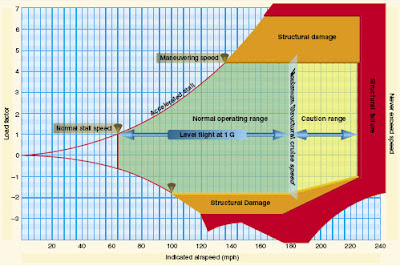The are 4 radio navigation types available for use in VFR. They use either satellites or radio stations on the ground.
•VHF Omnidirectional Range (VOR)
•Nondirectional Radio Beacon (NDB)
•Long Range Navigation (LORAN-C)
•Global Positioning System (GPS)
VOR
 VORs are some of the more commonly used navaids for VFR flying. By itself, it provides magnetic bearing information to/from the station. If it has DME also installed at the location, it is a VOR/DME. If military tactical navigation equipment (TACAN) is installed at the site, it is known as a VORTAC.
VORs are some of the more commonly used navaids for VFR flying. By itself, it provides magnetic bearing information to/from the station. If it has DME also installed at the location, it is a VOR/DME. If military tactical navigation equipment (TACAN) is installed at the site, it is known as a VORTAC. How it works:
Course radials are projected out from the center of the site in a clockwise manner. At magnetic north, the pulse begins and a sweep goes clockwise. The amount of time it takes for the sweep to match with the your aircraft position produces an indication on the VOR equipment in your aircraft.
The OBS knob is used to center the needle TO/FROM. Set TO to go TO the station. FROM is used do determine what radial you are on, such as in Lost Procedures.
VORs transmit on VHF frequency band of 108.0 to 117.95 MHz. VHF is limited by line of sight, so mountains and other obstacles may hamper reception.
Types of VORs
•Terminal (T)
•Low Altitude (L)
•High Altitude (H)
Ensuring Accuracy
A requirement for IFR flight is that the VORs have been checked within the last 30 days. Possible checkpoints are (from most desirable to least)
VOT Check ± 4º (info found in A/FD)
Ground Checkpoint ± 4º
Airborne Checkpoint ± 6º
Dual ± 4º between the 2.
Also, each VOR station has a morse code identifier depicted on aeronautical charts. If you do not hear it, station is out of service. A red flag will pop up on the VOR instrument to indicate inadequate strength of transmissions.
Receiver Types
There are 3 main types of aircraft VOR receivers.
•Course Deviation Indicator (CDI)
•Horizontal Situation Indicator (HSI)
•Radio Magnetic Indicator (RMI)
CDI - is the most basic. It consists of an OBS selector to turn the receiver throughout its 360º, a needle to show the radial relative to the aircraft, and a TO/FROM Indicator. When flying to the station, at station passing, the needle will deflect fully before returning toward center with a FROM indication.
 HSI - Combines the Magnetic Compass with the navigation signals of a VOR and a glideslope. The combination allows the pilot to readily see the station relative to the aircraft's path.
HSI - Combines the Magnetic Compass with the navigation signals of a VOR and a glideslope. The combination allows the pilot to readily see the station relative to the aircraft's path.Finally, a RMI provides magnetic or directional gyro heading, VOR, GPS, and ADF bearing information. It consists of a compass card, heading index, two bearing pointers, and pointer function switches. The pointer indicates course to selected NAVAID or waypoint.
DME - or Distance Measuring Equipment consists of ultra high frequency (UHF) with VOR/DMEs and VORTACS. It measures Slant Range distance to station. This means, the distance is greatly affected by altitude. Though directly over the station at 6,000 ft, the DME would indicate about 1.0 NM.
VOR/DME RNAV - is a method of using VOR signals specially processed by aircraft RNAV. In a sense it allows the pilot to move a VORTAC and relabel it as a waypoint. This allows for a straight course to be flown without concern for orientation of VORTACs
ADF - Automatic Direction Finders use stations known as Non-Directional Beacons (NDBs). NDBs operate on low or medium frequency band of 200 to 415 kHz. These beacons transmit a 3 letter identification in code. A compass locator, which in a sense is the same thing, but for instrument approaches, transmits a 2 letter identification.
It is not affected by line of sight like the VOR receivers, so it will work as long as a plane is within range of the station. However, the low frequency is susceptible to interference.
There are particular terms for using an ADF that must be understood.
Magnetic Heading - Where the Nose is pointed
Magnetic Bearing - Direction to the station from the aircraft's position.
Relative Bearing - The amount of clock-wise degree change from the aircraft's nose to the Magnetic Bearing.
To solve for any one of these, use
MB = MH + RB
LORAN-C
is another form of RNAV, but uses low frequency transmitters.
Global Positioning System (GPS) - Satellite-Based radio navigation. You will never see GPS-related symbols on an aeronautical chart because GPS "stations" are in space.
RAIM refers to Receiver Autonomous Integrity Monitoring - a fancy way of letting you know if the satellite is giving you bad information. At least 5 satellites need to be in view for this to work. GPS systems vary from fully integrated VFR/IFR equipment to simple yoke or handheld devices. Keep in mind that handhelds do not have RAIM capability and while they may be useful as a supplement to navigation, they cannot entirely be relied on.
Databases must be up-to-date.
VFR Waypoints
are shown on charts with a magenta flag and a 5 letter identifier beginning with "VP". These are not intended for use over ATC channels. They are meant for computer entry and flight plan routings. It is advisable to avoid programming waypoints while flying. All inputs should be done on the ground to avoid error.
Ultimately, never rely on one set of navigation equipment. Even if you have just one available, you may still be able to use your eyes and charts to narrow down your exact position.

















































